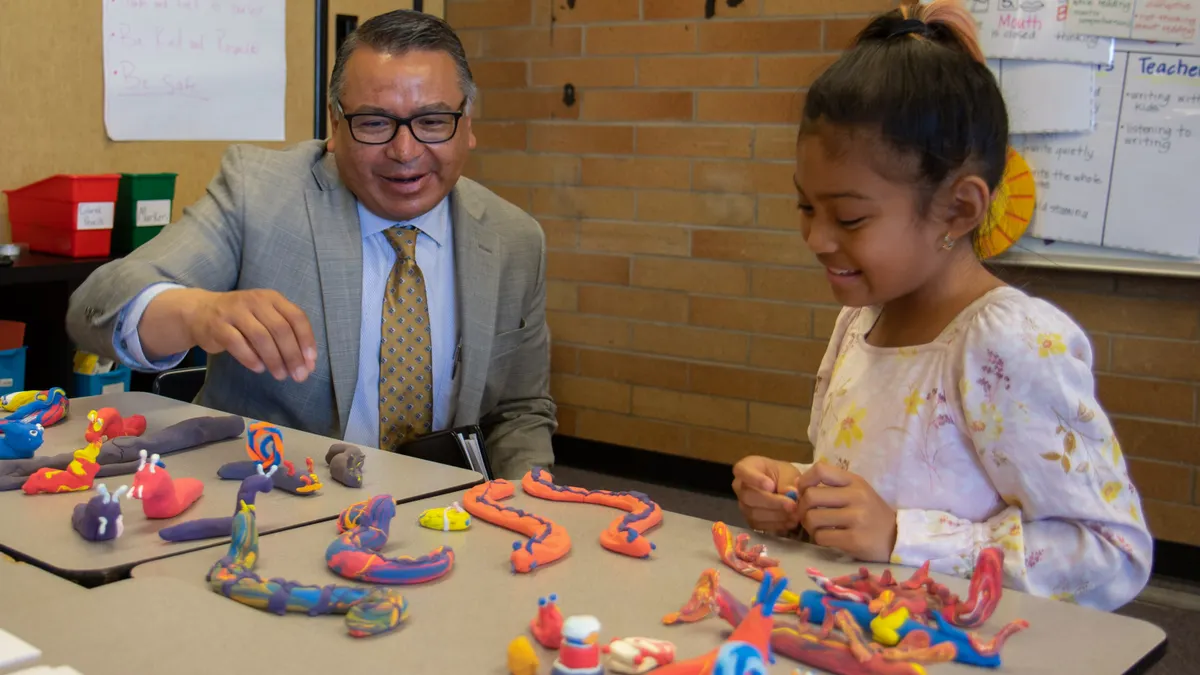Formerly the South Dakota Secretary of Education, Melody Schopp is director of education industry consulting at analytics provider SAS.
The American Rescue Plan Elementary and Secondary School Emergency Relief (ARP ESSER) Fund dedicates $122 billion to help schools reopen and operate safely and address the pandemic’s impact on students. This financial windfall is an opportunity to transform education.
As a new report from the American Enterprise Institute points out, much of the money may not go directly to COVID recovery and school reopenings. I think that’s reasonable. We should find a balance between short-term recovery investments and allocations to sustainable, long-term programs that build resiliency and transparency.
There are three areas where states can invest that not only address the effects of the COVID-19 pandemic but will prepare them for future crises. The one common theme for all of them? Data.
State longitudinal data systems (SLDS)
When the pandemic hit, many districts and schools scrambled to arrange virtual learning for thousands of students. These disruptions went beyond the classroom, as students who rely on schools for lunch and breakfast were suddenly cut off. Over the ensuing months, students seemingly disappeared, not showing up for online or classroom learning. It was particularly true for vulnerable student populations.
This is, at its core, a data problem. States and districts have outdated or incomplete data on students. The states that handled COVID’s upheaval better had strong data systems in place. We now have the opportunity to modernize data systems with ESSER funds. SLDSs are key to bolstering data sharing and analysis capabilities with a flexible infrastructure. The Data Quality Campaign is a pioneering advocate for modernizing SLDSs and has many great resources to guide states in the effective use of data in pandemic recovery.
Michigan’s SLDS allowed it to quickly identify and get food benefits to students during the pandemic. This included students who didn’t previously need the benefits, but whose economic situations changed due to the pandemic. States without strong data infrastructure or policy barriers saw food benefit applications take months to process, an eternity for struggling families.
A modern SLDS provides flexibility to tackle new challenges such as food distribution or remote learning access. In both examples, accurate home address data is critical to ensuring meals and Wi-Fi are available to students.
Of course, the benefits of an SLDS go beyond crisis response. An SLDS connects siloed data systems and creates a unique identifier that follows a student’s path from pre-K to the workforce. Different state agencies use these aggregated data for research purposes and program evaluation to better drive services, funding and policy.
For instance, Minnesota is using its SLDS to study the pandemic’s effects on learning, graduation rates and workforce success. They are also using this newly connected data to look at household or family needs, to provide more wrap-around services. An SLDS can help identify people struggling to re-enter the workforce and help guide them to the right skill development programs.
Financial transparency
The Hunt Institute published an extensive menu of options for ESSER education investments. With so many possibilities, it will be critical for states to track expenditures and measure effectiveness of the investments. Additionally, states need to share with the public how the money is spent and what the outcomes were.
Ideally, states would use a centralized platform that integrates data from multiple financial reporting systems at the school, district and state levels to ensure equity and transparency of funding.
With better visibility into overall funding and investments, states can mitigate potential gaps by forecasting finances down to the local level. It will be easier to adhere to new regulations around reporting and meet federal requirements to report on per pupil expenditures at the school level. States can then verify funding priorities resulted in the intended outcomes to keep investing in what moves the needle for kids, and scale back on programs with no evidence of effectiveness.
It’s not just policymakers and government agencies that demand results, of course. Citizens need to understand how the flood of ESSER funds is helping their children and schools recover. A data platform makes it easier to create public dashboards that address public concerns and build trust with the state education agency.
The data platform becomes the mechanism for tracking and reporting on the use of tax dollars and grant money in “normal” years. And if we are faced with another crisis, states will be ready to better manage the influx of federal dollars.
Understanding and narrowing the digital divide
In 2000, after more than 20 years in the classroom, I joined the South Dakota Department of Education at a time when a visionary governor set out to provide all schools with what was, at the time, high-speed internet access. His goal was to ensure that no matter what a student’s ZIP code was, they could have access to a great teacher anywhere in the state.
We are more capable than ever of meeting that goal for all U.S. students, as technologies have evolved, and schools have more access to laptops and Wi-Fi hotspots. But, as the pandemic highlighted, the digital divide starts at home. According to Education Superhighway, 10-15 million students still do not have in-home broadband.
States should use federal funds to get high-speed internet to remote and underserved areas, get broadband into more homes, and expand Wi-Fi to every classroom and create the building infrastructure to scale for future needs. They should also build capacity of computers, Wi-Fi hotspots and other peripherals for current and future students.
These actions will help address existing digital inequities that were exacerbated by the closing of schools. But policymakers and education leaders must also be able to evaluate and understand the digital divide’s effects. As the COVID delta variant forces thousands of students back to virtual learning, are states ready to evaluate the effects of unequal access to technology?
Again, the answers lie in data. Analysis of socioeconomic, demographic, achievement and data about device and broadband access can identify where gaps remain across states’ districts and schools, and show where certain groups of students are disproportionally affected. Pairing this data with student growth or learning loss metrics tells us virtual learning programs are not working for all students.
Some student groups need different learning supports, and this data allows state leaders to determine which learning options are best for students and highlight best practices where virtual and hybrid options are succeeding. The data also allows policymakers to target resources to ameliorate the digital divide and prevent the achievement gap from widening.
Think long-term while addressing short-term problems
ESSER funds are an opportunity to not only help us recover but reimagine education. There are urgent needs that must be addressed. Students and educators need more support than ever and need to be able to teach and learn in safe environments.
We should also invest in data and analytic systems that will provide value for years to come, when COVID is long behind us. By improving our use of data, we can make better decisions today, promote equity and transparency, and build resiliency that will prepare us for whatever the future brings.

















